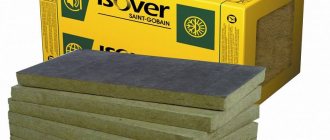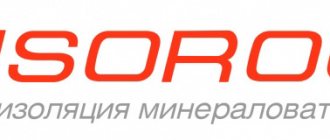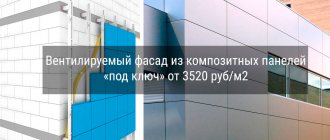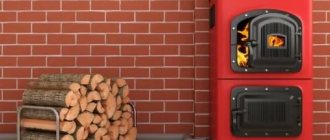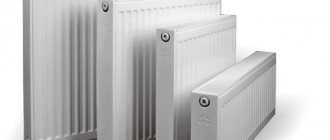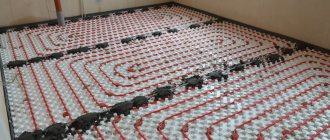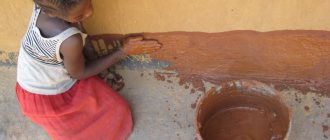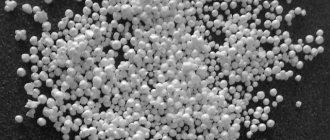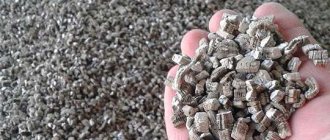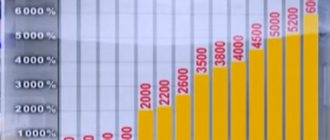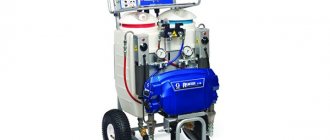Penofol is an insulation material defined as a heat-noise-moisture-insulating material. It is made from environmentally friendly substances, and is thin and light in weight. In industrial and civil construction it is used for:
- basement insulation;
- wall insulation;
- attic insulation;
- ceiling insulation;
- roof insulation;
- floor insulation;
- hydrothermal insulation of pipes;
- thermal insulation of air conditioner;
- hydrothermal insulation of external walls;
- strengthening waterproofing and massive insulation;
- dust protection;
- repair of ceiling covering;
- strengthening walls;
- door insulation;
- insulation of water heating elements.
In the automotive industry, Penofol is used as a material for sound insulation and insulation of vehicle interiors.
Specifications
Material classification
The following types of foil Penofol insulation are available:
- Type A - material based on polyethylene foam with foil on one side;
- Type B - material based on polyethylene foam with foil on both sides;
- Type C (self-adhesive) - a material based on polyethylene foam with foil on one side. It refers to self-adhesive insulation, due to the fact that a layer of glue is applied to the other side, which is protected by an adhesive coating.
There are also varieties of Penofol. Depending on the additional coating, they are divided into: A, B, C-LL - with lamination with polyethylene terephthalate film; A, B, C-LP - with lamination with polyethylene film; A, B, S-M - embossed with foil on one side; A, B, CR – embossed with foil on one side;
Perforated
Recently, the production of Penofol with perforation has been launched, i.e. the ability to remove moisture from the material. This type of insulation is used mainly on the external facades of a building. Walls where Penofol was used as insulation acquire the ability to “breathe”.
Penofol is made from polyethylene foam onto which aluminum foil is fixed by pressing on one or both sides. It is acceptable to use polyethylene foam of several brands, and not just PPE, in the absence of deterioration in the quality and properties of the insulation. The adhesive layer must be protected by an adhesive material.
Kinds
Depending on the intended use of the material, manufacturers produce the following types:
- type A , covered with foil on one side only. It is also called one-sided;
- type B , presented in the form of a double-sided foil coating. Used for autonomous type of insulation;
- type C, self-adhesive penofol, which at its base consists of foil, polyethylene and a layer of moisture-resistant glue. This option is convenient for installation and does not require additional installation tools.
In addition to the three main types, manufacturers also produce the following options:
- type ALP , which is additionally covered with polyethylene film. This film is designed to protect the material from aggressive environments;
- type M and R , presented in the form of one-sided insulation with a relief base;
- type AIR , special materials used to install air vents.
Insulation thickness and length
The cost of insulation directly depends on its thickness. The larger it is, the higher the price. Also, the cost increases depending on the number of foil sides and coating layers.
Manufactured in thicknesses: 3mm, 4mm, 5mm, 6mm, 8mm, 10mm (up to 40mm thick on request in rare cases). Penofol 1 centimeter thick has the highest noise protection and retains heat best. The material with a thickness of 5 mm remains in first place in popularity, due to the optimal ratio of quality and price. Available in rolls. Standard roll length (depending on thickness): 5m, 10m, 15m, 30m, 50m.
The ability of insulation to absorb water
The ability of any product to absorb and retain moisture is called water absorption. When this value is high, the thermal conductivity and specific gravity increase and the strength of the material decreases significantly.
Penofol's water absorption depends on its type: Type C - 3.5%; Type B - 0.6%; Type A - 0.7%.
Vapor permeability is understood as the ability to transmit and retain vapors, therefore, with a large coefficient of this value, the thermal conductivity indicator is also higher. When using Penofol there is no need to lay additional film.
To compare the vapor permeability of different building materials:
- plywood - 0.02 mg/(m*h*Pa),
- polystyrene foam - 0.023 mg/(m*h*Pa),
- concrete - 0.03 mg/(m*h*Pa),
- DSP - 0.12 mg/(m*h*Pa).
- Penofol has a vapor permeability of less than 0.001 mg/(m*h*Pa).
Foil penofol: technical characteristics of the material
Foil penofol is able to withstand temperature fluctuations from -60 to 100 ° C, which expands the scope of its use. The thermal reflectivity of the material reaches 97%. The thermal conductivity coefficient is in the range of 0.037-0.052 W/m*C, which depends on the operating conditions.
This suggests that 1 cm of polystyrene foam can provide the same thermal insulation as 4 cm of polystyrene foam. The sound absorption level of the material is 32 dB, which creates a good noise insulation barrier. In addition, penofol can dampen vibrations, which is especially important when insulating metal surfaces.
Note! The thermal transfer resistance of regular or self-adhesive foil foam foam is 10 mm higher than that of a 50 mm thick brick wall.
The specific gravity of the material is 44-50 kg/m³, which is much less than that of mineral wool. An important characteristic of penofol is its low level of moisture absorption. The water saturation threshold is 0.35-0.7%. The elasticity coefficient varies between 0.26-0.39 MPa. The vapor permeability of the material reaches 0.0001 mg/mhPa, making it a good barrier to evaporation. The thermal conductivity of foil insulation is 1.95 J/kg*C.
Foil penofol can withstand temperature changes ranging from -60 to 100 °C.
Penofol is produced in the form of a roll material, the length of which is 5, 10, 15, 30 and 50 m. The width of the product can be in the range of 0.6-1.2 m. Standard thickness is 2, 3, 4, 5, 8 and 10 mm. For some options this figure is 40 mm.
Penofol's ability to conduct heat
The thickness of the aluminum foil used to cover the layer of foamed polyethylene is from 12 to 30 microns. The percentage of pure substance is more than 99%. During Dewar's research, it was found that a number of materials are capable of almost completely reflecting thermal energy, however, due to this, the material can heat up and it becomes necessary to supplement the structure with a thermal barrier. In Penofol, the function of a barrier is performed by foamed polyethylene.
The level of thermal reflection of polished foil is at least 97%.
Important! Resistance depends on the thickness and type of insulation. For type B with double foil and a thickness of 4 mm, this figure is 1.20 m2*C/W; 5 mm thick - 1.23 m2*S/W, 10 mm thick - 1.355 m2*S/W. For comparison, the mineral wool layer for such resistance should be more than 85mm. The data calculation was adopted in accordance with SNiP.
Features of the structure
Penofol is usually classified as a reflective insulation product. It was developed specifically to protect various surfaces from negative factors such as cold, moisture and steam. Over the years of its production, the product has been improved. As a result, it acquired not only excellent thermal insulation properties, but also protection from water and sound. Its structure contains several layers:
This material belongs to the category of heat reflective thanks to the foil, which is attached to the polyethylene “foam”
- The first one is polyethylene foam. It has many closed pores. They are 90% filled with air. This is what prevents heat transfer.
- Aluminum foil is the second layer. It provides effective heat reflection. Penofol can be covered with foil on one or both sides. This point influences its main technical characteristics and also determines the application features. To reliably connect the base with the metallized layer, the heat welding method is used.
Read also: about the types of reflective insulation and the technology of using insulation.
If you have not yet decided on the choice of foil insulation for your home, be sure to watch this video:
For polyethylene, the thickness varies from 2 to 40 mm, and for foil this parameter ranges from 12 to 30 microns. The presence of an air cushion, which is covered with a reflective element, ensures heat retention for a long time. The use of penofol during the construction of a house makes it possible to save on heating the home. In summer, the heating of the object slows down noticeably.
Soundproofing
A unique property of Penofol is its ability to provide good sound insulation with a small insulation thickness. This property is actively used in the automotive industry and, if desired, can reduce noise from extraneous factors at home.
Considering that this material can be used both indoors and outdoors, and with a thickness of only 4-5 mm it can significantly reduce the noise of the apartment, this is undoubtedly a useful quality of insulation.
Penofol has sound absorption above 32 dB.
Explosiveness and toxicity
Temperature limits for use are from +100 to -60 degrees Celsius. At such temperatures, Penofol is an absolutely environmentally friendly material and is completely non-toxic. When using it indoors or outdoors, no precautions are required. The sticky adhesive used in the manufacture of Type C insulation is non-toxic. The adhesive used is based on a water-acrylic dispersion. The emulsion used is non-explosive and non-toxic. Hazard class - 4 (low hazardous substances). The material applied to the adhesive base to protect it is a lavsan siliconized film. Non-toxic.
Varieties of "Penofol"
"Penofol" can be classified by type:
- A.
- IN.
- WITH.
- ALP.
- R and M.
- Super NET.
- AIR.
In the first type, the aluminum layer is applied only from the outside; this material is used in conjunction with polystyrene foam and styrodur. Type B is coated on both sides and is suitable for independent use. Type C is a self-adhesive material in which the outside is covered with foil, while the inside is polyethylene foam with contact adhesive.
ALP is “Penofol”, on top of the aluminum layer of which a polyethylene film is fixed. This material is laminated and can be used for needs in rural areas. One-sided foil embossed material are varieties R and M. But “Super NET” is used for thermal insulation of networks. The latter variety is suitable for air ducts.
Fire safety of penofol
This material belongs to substances that are difficult to burn. Penofol has a corresponding certificate stating that it is not fire hazardous.
When burning Penofol:
- melts upon contact with an open flame;
- does not flare up;
- does not burn.
Important! In terms of flammability, Penofol belongs to group G1 (the material is slightly flammable, does not support combustion, does not spread flame). In terms of flammability, it belongs to group B1 (non-flammable, able to withstand heat flow of more than 500ºC). According to its ability to generate smoke, it belongs to group D2 (moderate ability to generate smoke).
Methods of using Penofol
Use on the floor If it is necessary to insulate the floor, Penofol is installed on top of the logs, with the foil side facing up, without tearing. In general, type A with a thickness of 4 or 3 mm is sufficient. It is necessary to provide an air gap of 20 mm. Apply sealing insulation along the entire joint using aluminum adhesive tape.
When laying Penofol on a concrete base, it should be taken into account that concrete is an aggressive environment, therefore, when using Penofol, the floor is covered with plastic film or insulation coated with a protective film is used. Laying is done with the foil side up, butt joint. Sealing is done using mounting tape. A heating system is laid on top and filled with screed. Decorative flooring is laid on top: laminate, parquet, tiles.
Preserving heat from heating devices To increase the temperature in the room, it is reasonable to install Penofol type C or A on the wall behind the radiator. In practice, the effectiveness of increasing heat transfer from the battery by 20% has been proven. Using insulation 5-3 mm thick, you can increase the temperature in the room by 4 degrees.
Insulation of walls If in winter the room is damp and the temperature drops below 20C, insulation of the walls is necessary. It is possible to insulate the outside and inside of the house. The efficiency of insulation indoors is much higher. The use of insulation type A, B with a thickness of 5 mm is justified.
Type C application
In places where it is difficult to use Penofol type A and B, type C is used. It is actively used in the insulation of water heating boilers, sound insulation of air ducts, and thermal insulation of pipelines, which also eliminates the appearance of condensation.
Application area
The described materials are used as a vapor barrier in rooms with high humidity, such as baths and saunas. The film does not melt, does not release substances hazardous to human health into the air, and can be used at temperatures up to +120 °C.
When installing modern steam rooms, the reflective properties of foil vapor barrier are very important, because the sauna should warm up in a short time after heating the stove, and energy costs should be reduced. However, foil vapor barrier is used today not only in the bathhouse.
When building a frame house, conventional vapor barriers are increasingly being replaced with foil ones. With the same heating power, using this approach it is possible to increase the room temperature by 2 °C. However, such material must be used wisely, because it should not be used for internal thermal insulation of buildings made of concrete and brick, as well as other heat-intensive materials.
Glue used for Penofol
Using glue to attach insulation has several advantages:
- low time and cost;
- does not require special skills;
- technologically simple;
- no need to use a professional tool.
But the load-bearing capacity of fastening with glue is not high and depends on the weight of the material. The advantage of Penofol is its weight. It's light. Gluing depends on the adhesive properties of the adhesive base, i.e. ability to penetrate into the pores of the surface for gluing.
Glue containing an organic solvent is the most effective. Also an important indicator for fastening strength is resistance to water.
The glue used in residential premises must be non-toxic. The safety of the adhesive can be guaranteed if it has an EMICODE certificate. To increase the effectiveness of the glue, you should clean the surface of dirt, dust, coating and eliminate all irregularities and cracks. When using an adhesive, you must strictly follow the instructions. Then, Penofol will last a long time and stick well.
Using the adhesive fastening method is inferior to other more common and reliable installation options:
- fastening with lags;
- fastening with staples;
- fastening with slats;
- fastening with screws, etc.
It is also important to remember that, regardless of the method of fastening, it is necessary to properly insulate all joints of the Penofol structure, and it is worth giving preference to the “joint to joint” installation method over the “overlapping” method. It is best to use special metallized construction tape as insulation. When insulating baths, saunas and other rooms with high humidity, it is better to give preference to other methods of fastening.
Receipt
Foamed foil PE is made by applying a metallized layer to a sheet of polyethylene. Maximum adhesion of surfaces of dissimilar materials is achieved thanks to the thermal welding method. The production process has features that will determine the final properties of the finished product:
- Foamed polyethylene itself contains a lot of possibilities, which, depending on the manufacturing technology, can be more or less elastic and durable, and also have additional thermal and fire resistance capabilities.
- When using foil as a reflective layer, it is polished. The reflective coefficient, which in the best case should be more than 97%, depends entirely on the quality of polishing.
Analogues of Penofol
It is important to understand that Penofol is not the name of the insulation, but a specific brand. Therefore, there are a number of analog materials with similar properties.
Among the analogues are the following:
- Alufom Insulation made of foamed polyethylene covered with metallized film or polished aluminum foil. The areas of application are identical to Penofol.
- Izofol Insulation material consisting of one or two layers of polished aluminum foil or aluminum spraying on a Mylar film, covering polyethylene foam. Available in roll form. Used as heat, sound, vapor insulation. It is used in the construction of industrial and civil buildings.
- Stizol: Stizol F, Stizol F2, Stizol LM; Foamed polyethylene coated with a laminated metallized film (Stizol LM) or one (Stizol F) or two (Stizol F2) layers of polished aluminum foil. It is used as insulation for walls, floors, roofs, and other structures.
- Energoflex Insulation made of foamed polymer or polyethylene. Available in the form of tubes, plates, rolls. Widely used in heating, air conditioning and enclosing structures. The reflectivity of the rolls is 90%.
